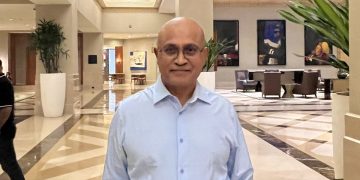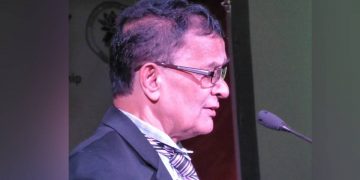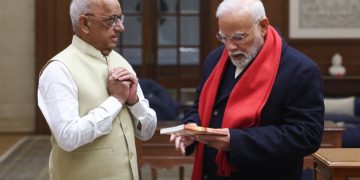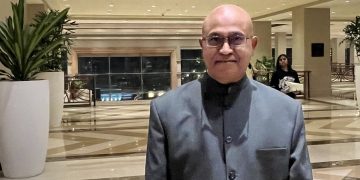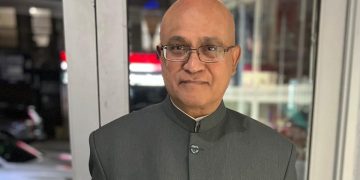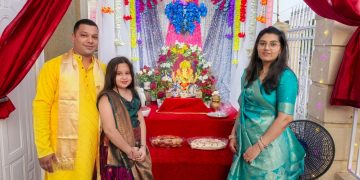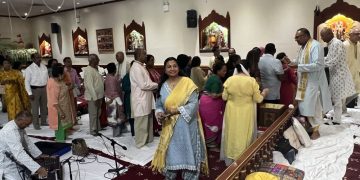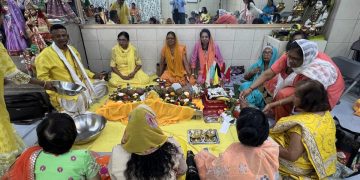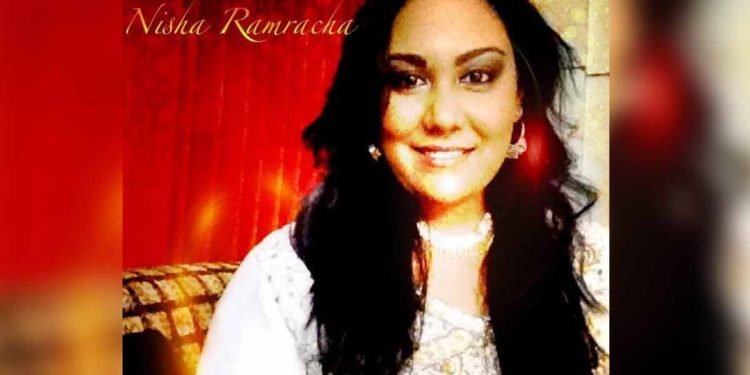While many are familiar with the festival of Divali most do not realize that Divali actually spans five days. The day we know as Divali is the third day of Divali and is actually known as Lakshmi Puja. This is why on Divali Hindus worship Goddess Lakshmi and welcome her into the home before embarking on a deeya lighting campaign.
Divali also known as Deepavali or Diwali means a “series/rows of lamps/lights” and is known popularly around the world as the “festival of lights.” The festival involves lighting small clay lamps known as deeyas (lights). Divali or Deepavali compounds the words dipa and avali from Sanskrit meaning lights/lamps and series/rows respectively. The deeyas are filled with oil and lighted to signify the triumph of Dharma (righteousness) over Adharma (ignorance). It celebrates the homecoming of Shri Rama, the great warrior prince back to the kingdom of Ayodhya which befalls the darkest night of the year hence why the people light deeyas to welcome him, his wife Sita and brother Lakshman. This much Hindus and most other people familiar with Divali understand.
Divali is practically a whole season. The festivities practically begin sometime right after Pitri Paksh. After Pitri Paksh, when Hindus pay respect to their ancestors through offerings then Navraatri (nine nights) begins. Navraatri celebrates the three major Goddesses in Hinduism for three nights each. The Navraatri before Divali is one of four Navraatris that happen during the year. It is called Sharad Navraatri. At the end of this Sharad Navraatri is a tenth day called Vijayadashami which menas “Victory on the tenth” or Dussehra “the tenth.” This is the day the Goddess is victorious for the forces of Dharma. Vijayadashami also marks the end of Ramleela or Lord Rama’s victory over Ravan. Exactly twenty days after Vijayadashami we celebrate Divali, the homecoming of the rightful king, Rama. If you check Google maps the journey by foot from Sri Lanka to Ayodhya is approximately 20 days and 12 hours, they may have arrived at night off course. Our scriptures do not appear to be wrong not even by modern calculations.
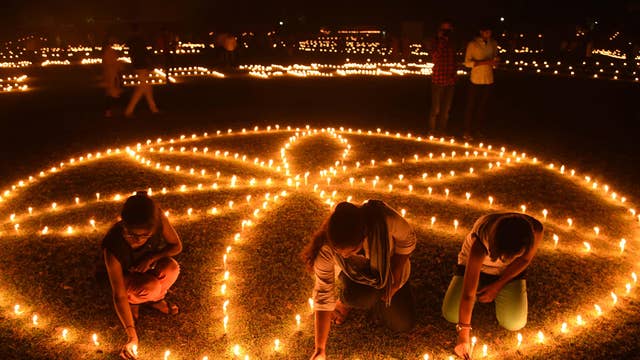
Divali is not a single day but a five day long celebration. While the public holiday is given as a single day in countries like Trinidad and Tobago, the spiritual aspect goes on for five days. Divali begins two days before the day of lighting deeyas and ends two days after. The first day of Divali is Dhanteras when Hindus clean their homes, businesses and decorate. Dhan means wealth and Dhanteras alludes to Dhanvantari the God of health and healing who came out of the cosmic churning of the ocean at the same time as Lakshmi. It also signifies an annual renewal for the next year. The second day is Naraka Chaturdashi when festive food and sweets are purchased. It also signifies an auspiscious to pray for the deified ancestors as well as Krishna’s venture with his warrior wife Satyabhama to defeat the adharmic entity Narakasura. In Southern India it is considered Divali day.
The third day is Divali proper as we all know it. The third day is when people in the eastern, western and northern parts of India celebrate. This would be more accurate for West Indian Hindus since most of our ancestors came from the North, Uttar Pradesh, Bihar and hence the region of Ayodhya itself. Ayodhya is located in modern day Uttar Pradhesh. In Lord Rama’s era the city of Ayodhya would have been in the kingdom of Kosala. This third day is the day of Lakshmi Puja. Homes are lit with deeyas and prayers are offered to Goddess Lakshmi and Rama’s homecoming is celebrated. It coincides with the darkest night of the year falling on the Hindu Luni-Solar month of Kartik (mid-October to mid-November on the Gregorian calendar). This day is also the last night of the dark fortnight of the month.
The fourth day is the first day of the bright fortnight of the luni-solar month observed as Annakut, Goverdhan Puja, Balipratipada or Padwa. Annakut means a heap of grains and mountains of foods. It is the original Boxing Day after a grand festival of food. Bali has also been defeated by Vishnu. Goverdhan Puja is celebrated in accordance with Krishna saving the cowherd from the flood and rains of Indra. The relationship of husband and wife is celebrated through the understanding of Shiva and Parvati; the divine cosmic energy of dissolution by Shiva which many mistakenly called destruction and the procreative energy of the feminine Shakti.
The last and fifth day celebrates Bhai Duj (brother’s day) or the bond of the sister and brother just like Raksha Bandhan. Brothers travel to meet their sisters and in a reversal of Raksha Bandhan, the sister feeds the brother today. Vishwakarma Puja is done and this is simulataneously celebrated on the fifth day in honor of the arts of architecture, building, crafts, trade and the machines tools and looms are blessed. So yes, business is considered a sacred art in Hinduism as well. After all kama (different from karma!) or the pursuit of wealth is considered one of the four goals of Hindu life and there’s nothing wrong with wanting to live well.
While many Hindus fast for the whole festive season some choose to fast for a shorter set of days than others. For those who are contemplating on fasting for a shorter length of time these worshippers need to keep in mind that Divali lasts for five days and any shorter length of fasting before and after Lakshmi Puja will defeat the observance of the fast or the festival. Hindus do not fast from food during Divali but have a great feast. However, fasting itself takes on many different meanings in Hinduism and is not monolithic. Fasting can mean abstaining from certain foods like meat. Our Caribbean tradition has been to abstain from meat. Yet fasting does not always mean abstaining from all food. Vegetarian Hindus may abstain from substances such as onion, garlic and other tamasic foods not considered to have better energies. In other words they may prepare foods with a better sattvic content that increases their energy and is a more balanced or Mitahara meal. Like many other practices in Hinduism, fasting too has variations and choices.
The Hindu community tends to have a less than basic understanding of the structure of Hinduism. No Hindu is expected to have a PhD in religion but the Hindu religion is not taught in a well-structured manner neither is it articulated in a proper fashion within the community especially at the mandirs (temples). What Hindus celebrate is parts and parcels of the whole without having a complete vision of the structure. This goes for Hindus across the globe. However we actually have a better system of education and deliverance of information on Hinduism for Hindus in the Caribbean especially in Trinidad and Tobago than do most Hindus internationally including India. Yet we need to maximize the functioning of this system to deliver a thorough constitution of what is Hinduism or we will be celebrating blindly. It is time to update our Hindu software. The five days of Divali is something that configures a rudimentary grasp of Hinduism, it is like the 10 commandments or the five pillars of Islam. Time for Hindu leaders to get their act together. Stop with the preaching of random slices of stories, morals, and give the people the whole cake!
Shubh (Happy) Divali,
Nisha Ramracha.














